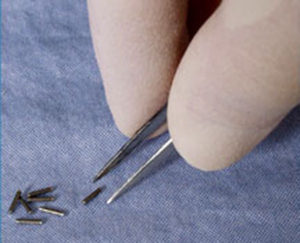Depending on the kind of cancer and it’s location in the patient’s body, brachytherapy may be a favorable option when tumors cannot be surgically removed. By using small pellets of radioactive materials, surgeons can deliver high doses of radiation to specific parts of the body.

What is it?
Brachytherapy is a form of radiation therapy used to treat cancer. This procedure injects radioactive materials into the patient’s body to deliver short bursts of high radiation to cancerous cells. Brachytherapy is typically more precise than traditional external beam radiation and usually results in fewer side effects. The radioactive materials may be placed within the body permanently or just for a short time depending on the type of therapy.
How to Prepare
In the days/weeks before the treatment, patients may undergo imaging tests such as X-rays or CT scans. The imaging tests will help surgeons determine the dosage and positioning of the radiation. Brachytherapy can be used in body cavities or inside tissue/organs. Depending on the patient’s specific treatment, general anesthesia, and/or sedatives may be used. Some pain and tenderness may exist after surgery, but most patients should be able to resume normal activities when they feel healthy.
What happens during the process?
There are a few different ways the sources of radiation may be placed inside the patient’s body. In temporary brachytherapy, catheters or needles are inserted into the patient’s body, sometimes in different directions. Then, small pellets of radiation are pushed through the needles or catheters, exposing the cancer cells to the radiation for a short period of time. After this form of therapy, the sources of radiation are removed from the body. In permanent brachytherapy, radiation sources are injected into or nearby the cancerous cells. These injections are then left in the patient’s body.
Risks and Complications
- Swelling and tenderness near the radiation source
- General fatigue
- Pain or discomfort near the injection site
- Painful urination
- Discolored discharge (in the case of uterine cancer)
Disclaimer:
All GlobeHealer Site content, including graphics, images, logos, and text, among other materials on the site are for educational purposes only. This content is not intended to be a substitute for professional medical advice, and you should always contact your physician or qualified health provider for information regarding your health. Information on this site regarding the overview, diagnosis, and treatment of any kind should be looked at, in addition to the advice and information of your health care professional. Do not disregard medical advice or delay seeking treatment or medical advice due to information found on the GlobeHealer site.
If there is even the possibility that you may have a medical emergency, seek treatment, call your doctor, or call your local emergency telephone number immediately. GlobeHealer does not endorse being the first line of communication in case of emergency and does not endorse any specific test, physician, facility, product, procedure, opinion, or other information that is or may be mentioned on this site or affiliated entities. Reliance of any and all information provided by GlobeHealer, its employees, affiliations, others appearing on the Site under the invitation of GlobeHealer, or visitors of the site is solely at your own risk and is not the responsibility of GlobeHealer.
Image Source:
https://upload.wikimedia.org/wikipedia/commons/6/62/Brachytherapy.jpeg
